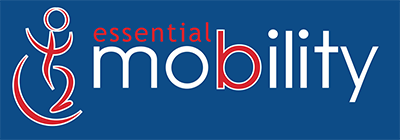On 7th October 2019, Sainsbury’s and Argos announced that they would be introducing sunflower lanyards across all of their stores in the UK. Their aim is to ensure shoppers with hidden disabilities receive an improved experience, as staff and fellow shoppers are made aware of potential disabilities.
This introduction followed a trial in 2018, where the success of the lanyards showed encouraging signs where there were proven benefits to shoppers and employees.
The scheme is intended to reassure and assist customers with hidden disabilities. By wearing the lanyard, staff can very easily and quickly identify a member of the public that may need assistance or extra support.
What are Sunflower Lanyards?
A sunflower lanyard is intended to be worn by a person with a hidden disability. The bright green lanyard is dotted with sunflowers, making it very easily identifiable when worn around the neck and free from obstruction. The sunflower lanyard scheme is supported by various charities, including Alzheimer’s Society, RNIB, The National Autistic Society and many more. Several businesses are opting to introduce the scheme too, with many airports taking positive steps. Most notably, is Manchester, where a Sunflower Room was recently opened, allowing those with disabilities to take some time away from busy departure lounges.
Wearing a lanyard is entirely voluntary, and those with hidden disabilities are not, under any circumstance, required to wear one. Instead, it is an opt-in, whereby those with hidden disabilities or families and friends who are accompanying them, can discretely inform staff that they may need assistance.
What is Classed as a Hidden Disability?
An umbrella term, a hidden disability encompasses a range of disabilities. A hidden disability is classed as a disability that is not immediately obvious to others. People with hidden disabilities may face additional difficulties when out in public, as it may not be entirely obvious to staff members that they require assistance.
Hidden disabilities include but not limited to:
• Epilepsy
• Diabetes
• Chronic Fatigue Syndrome
• Cystic Fibrosis
• Depression, bipolar disorder, schizophrenia, anxiety disorders and other psychiatric disabilities
• Deaf or blind.

Where Can Sunflower Lanyards be Used?
Although there are currently only a handful of businesses which have opted to introduce the use of lanyards, as awareness of their meaning and popularity increases, many other businesses will likely follow suit. This increase in awareness also means that the general public is becoming more aware of their meaning. We hope that over time, those with hidden disabilities can wear their lanyard in public, and the majority of people will know exactly what they represent. Whether you’re on public transport, at an airport, in the supermarket or the garden centre, you will be able to receive the additional support that you may need discretely.
How to Get a Sunflower Lanyard?
Lanyards are free, and you don’t need to provide any proof of your disability. Simply head to a participating store and request one at either the checkout or service desk. You might want to call ahead to check they have them available to avoid any disappointment.
Will you be opting into the sunflower lanyard scheme? Are you pleased that it has been introduced? We’d love to know what you think of it; get in touch via our social media channels.
If you are or know of anyone with limited mobility, why not browse our range of high-quality mobility scooters? Here at Essential Mobility, we pride ourselves in offering the best service to our customers, where your needs are of paramount importance to us, give us a call and find out how we can help you.





